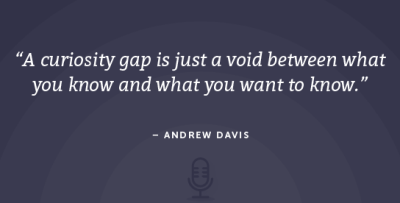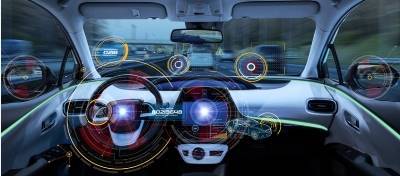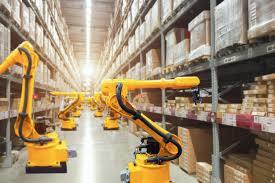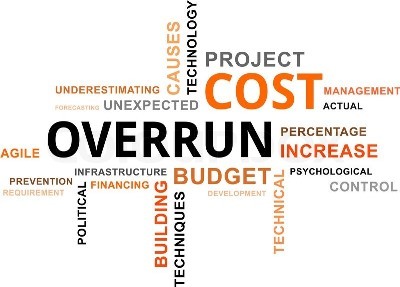Jeremie Averous's Blog, page 21
November 12, 2020
How Entrepreneurs Must Overcome Many False Assumptions
This post by Tim Berry crosses some t’s and dots some i’s in the field of entrepreneurship: ‘7 Very Common False Assumptions in Entrepreneurship‘.

Some key points mentioned in the post that I find very refreshing:
going for a high price option is a good way for a start-up, and often less capital intensive than the low cost optionIt’s very difficult to be the first in a new marketa lot lies into commercial and marketing, and not necessarily in having the best productDon’t overwork
On the latter we need to remember that starting a start-up is more like a marathon than a sprint and we need to keep the distance!
I believe this post reminds me how important it is for founder to be accompanied by mentors with experience in creating businesses so as not to fall into basic mistakes.
And I absolutely love the quote at the start of the post: “What gets us into trouble is not what we don’t know. It’s what we know for sure that just ain’t so.” — Mark Twain
The post How Entrepreneurs Must Overcome Many False Assumptions first appeared on The Fourth Revolution Blog.

November 10, 2020
How Opportunity Is Always in Existing Gaps – At the Edge of Our Comfort Zone
I very much like this post by Valeria Maltoni: “Opportunity is in the Gap Between What you Know and What you Don’t“.

“The longer you can hold yourself in the space between what you take for granted and what could be next, the more you can learn about potential futures. That’s where the opportunity is.” Valeria Maltoni continues by recounting how she was able to unlock substantial business opportunities just by getting different departments or diverse people communicate at a higher level. The previous gaps between departments or people could easily be transformed in substantial opportunities.
Opportunity is always in a gap between two different and diverse ecosystems or environments. The point made here is that it is also between what we know and what we don’t know, where we need to rely on others and develop ourselves.
In any case, opportunity is not just where you are right now. Get up and seek to exploit those gaps at the edge of what you know and are comfortable with!
The post How Opportunity Is Always in Existing Gaps - At the Edge of Our Comfort Zone first appeared on The Fourth Revolution Blog.

November 7, 2020
How a Crisis Dramatically Accelerates Changes
What I find absolutely amazing in the current world Covid crisis is how it is accelerating changes. In particular, how it is accelerating changes that had already started but were not obvious or where inertia let unstable situations be maintained.

This is the case in the economic and business field where there is an increased differentiation between winners and losers of the current crisis. And the losers were often those that had a precarious market and financial situation. They could survive, sometimes barely, in a stable world; the crisis acts as a revealing factor.
This is also the case in world politics and strategics; the Covid crisis has been a substantial catalyst for China actions in Hong Kong and more generally on the world stage, and here again the crisis has acted as an accelerator of events which could be anticipated in the future.
Finally it is often the case on the personal level; the changes in the way we work and in our world vision, and in our daily lives, accelerates a transformation that was to happen as digital and communication become more widespread and available.
The Covid crisis provokes a deep transformation of the world, but as I see it, most of it is just an incredible acceleration of changes which were already written or in the works.
The post How a Crisis Dramatically Accelerates Changes first appeared on The Fourth Revolution Blog.

November 5, 2020
How Car Software is the New Automotive Battleground
This excellent post by Philippe Chain ‘Code, on wheels‘, explains how software is becoming the main differentiator in the automotive industry. And that the industry is becoming ripe for disruptors not originally from the automotive industry.

“Software will play a central role in the upcoming car revolution. Unless legacy carmakers quickly reinvent themselves, new players will fill the gap to provide an OS and an app ecosystem.” The author explains how Tesla is actually run as a software company at its core, upending the traditional organisation and approach of historical automotive companies. More than half of Tesla engineers are software engineers! Software updates are performed on a continuous basis in pure agile style.
This is very different from the traditional approach where everything needs to be specified in advance, and where development is split between various suppliers which need to be strictly coordinated.
The industry begins to understand that the company that will build the standard for the next automotive operating system will have a substantial competitive advantage. Seeing the danger, VW has announced that it gets in the race. Cars have today 100 million lines of code and very soon 200 to 300 million! “the likeliest evolution for the car industry is to see a competition between traditional carmakers and tech giants — with Tesla as the maverick — to come up with a car OS that will set the standard for the entire industry“. Not to mention the possibility to have an app ecosystem built on those standard OS.
The automotive industry is ripe for a revolution and not too many historical players may survive. Exciting times ahead!
The post How Car Software is the New Automotive Battleground first appeared on The Fourth Revolution Blog.

November 3, 2020
How to Identify Clues That the Universe Points Us to a New Direction
One nugget from the book ‘What I Know for Sure‘ by Oprah Winfrey: “One of my greatest lessons has been to fully understand that what looks like a dark patch in the quest for success is the universe pointing you in a new direction . Anything can be a miracle , a blessing , an opportunity if you choose to see it that way.”

What I find interesting in this quote compared to the usual ‘the universe is pointing you to where you should go, just pay attention’, is the concept of the “what looks like a dark patch“. It is interesting because it highlights how the difficulties, or possibly the failure areas, can be also seen as signs that we need to change the way we do things or the way we look at things.
How often do we identify a difficulty and try to find a way around it. Maybe we should pause for a while and wonder whether this is not a clue to something we should do differently.
The post How to Identify Clues That the Universe Points Us to a New Direction first appeared on The Fourth Revolution Blog.

October 31, 2020
How Virtual Characters and Deepfakes Are Becoming Mainstream
This interesting post ‘Deepfakes Are Becoming the Hot New Corporate Training Tool‘ shows how deepfakes start to become commonplace including as a corporate tool. In this example, it is used to allow simultaneous communication of a corporate messages in many different languages and cultures.

“This month, advertising giant WPP will send unusual corporate training videos to tens of thousands of employees worldwide. A presenter will speak in the recipient’s language and address them by name, while explaining some basic concepts in artificial intelligence. The videos themselves will be powerful demonstrations of what AI can do: The face, and the words it speaks, will be synthesized by software.”
Virtual presenters are used in this case, which are becoming increasingly frequent (refer for example to our posts ‘How Virtual Creatures Invade Our Connections and our World‘ and ‘How We Will Increasingly Interact With Artificial Humans‘). In this case, “the ability to personalize and localize video to many individuals makes for more compelling footage than the usual corporate fare“; and it is also cheaper and easier than mobilizing actual actors (another trade that is due for automation it seems!).
I have personally already used virtual voice-overs; using virtual people in videos is just another step and it is just around the corner. We need to get ready to face increasingly virtual interactions with people we will struggle to decide if real or virtual.
The post How Virtual Characters and Deepfakes Are Becoming Mainstream first appeared on The Fourth Revolution Blog.

October 29, 2020
How Automation Increases Pressure on Basic Production Positions
As part of the current debates about the impact of automation of our work environment, I found this post ‘How Hard Will the Robots Make Us Work (In warehouses, call centers, and other sectors, intelligent machines are managing humans, and they’re making work more stressful, grueling, and dangerous)’ quite interesting.

The point of the article is that in many instances, workers get monitored by algorithms that catch much more than a human manager would do in terms of fine grained performance and efficiency, and that it leads to far more pressure on workers. “These automated systems can detect inefficiencies that a human manager never would — a moment’s downtime between calls, a habit of lingering at the coffee machine after finishing a task, a new route that, if all goes perfectly, could get a few more packages delivered in a day. But for workers, what look like inefficiencies to an algorithm were their last reserves of respite and autonomy, and as these little breaks and minor freedoms get optimized out, their jobs are becoming more intense, stressful, and dangerous”
The article goes on to describe a number of grueling examples, but what has struck me is that most examples relate to production positions that are close to being automated, and based on hourly compensation. The only exception in the article is a software engineer whose productivity and presence is monitored at tight intervals, but apparently he is supposed to provide run-of-the-mill coding. The point is quite clear that for those production positions, automation is stressful because they are increasingly expected to be as good as robots – until they will be replaced. This however does not apply to more complex positions related to creativity and system architecture, where productivity can’t be measured the Industrial-Age way.
Still, this is a warning that for production positions that are close to being automated, the current development of AI and automated monitoring systems will create a stressful environment through closer supervision and this may be an area where regulation may need to intervene to protect workers.
The post How Automation Increases Pressure on Basic Production Positions first appeared on The Fourth Revolution Blog.

October 27, 2020
How to Overcome Bias in Project Estimates by Involving Generalists in Systemic Reviews
To finish our current series of posts on our exploration of the excellent book ‘Range: Why Generalists Triumph in a Specialized World‘ by David Epstein, I noted how the concepts developed about generalist vs specialist also applied in the field of project definition. It takes generalists and a diverse set of viewpoints to test the adequacy of a project definition file and associated estimate.

“Bent Flyvbjerg, chair of Major Programme Management at Oxford University’s business school, has shown that around 90 percent of major infrastructure projects worldwide go over budget (by an average of 28 percent) in part because managers focus on the details of their project and become overly optimistic. Project managers can become like Kahneman’s curriculum-building team, which decided that thanks to its roster of experts it would certainly not encounter the same delays as did other groups. Flyvbjerg studied a project to build a tram system in Scotland, in which an outside consulting team actually went through an analogy process akin to what the private equity investors were instructed to do. They ignored specifics of the project at hand and focused on others with structural similarities. The consulting team saw that the project group had made a rigorous analysis using all of the details of the work to be done. And yet, using analogies to separate projects, the consulting team concluded that the cost projection of £ 320 million (more than $ 400 million) was probably a massive underestimate“
“This is a widespread phenomenon. If you’re asked to predict […], the more internal details you learn about any particular scenario […] the more likely you are to say that the scenario you are investigating will occur.”
This is why we observe again and again the immense benefits of having independent reviews of projects by people having a generalist overview and not emotionally involved with the project to get an objective feedback. While this is what we promote, the fact that this review is systemic and performed by generalists is also an essential part of the value delivered. I will highlight it more in the future.
The post How to Overcome Bias in Project Estimates by Involving Generalists in Systemic Reviews first appeared on The Fourth Revolution Blog.

October 24, 2020
How Humans Will Crush Machines in Open-Ended Real World Problems
Following our previous posts (‘How Learning Approaches Must Be Different in Complexity: Upending the 10,000 h Rule‘) let’s continue our exploration of the excellent book ‘Range: Why Generalists Triumph in a Specialized World‘ by David Epstein. Beyond putting in question traditional learning techniques, and more generally pointing out the limits of specialization, he makes the point that in an increasingly automated world, the generalists that have a broad integrating picture are the ones that will be in demand.

“The more a task shifts to an open world of big-picture strategy, the more humans have to add“. “The bigger the picture, the more unique the potential human contribution. Our greatest strength is the exact opposite of narrow specialization. It is the ability to integrate broadly.” Reference is made here to open-ended games or infinite games compared to closed or finite games that are won by specialists (refer to our post ‘How Important It Is to Distinguish Between Finite and Infinite Games‘)
Therefore, “in open ended real-world problems we’re still crushing the machines.” This distinction between simple and complex, open and closed problems is really essential in defining the approaches that are needed and the competencies required.
Human’s strength is the capability to decide in complex open-ended problems, and this is what we need now to put emphasis on in terms of education, career and recognition.
The post How Humans Will Crush Machines in Open-Ended Real World Problems first appeared on The Fourth Revolution Blog.

October 22, 2020
How Learning Approaches Must Be Different in Complexity: Upending the 10,000 h Rule
Following on our previous post ‘How Generalists Are Necessary for the Collaborative Age‘, let’s continue some exploration of the excellent book ‘Range: Why Generalists Triumph in a Specialized World‘ by David Epstein. One of the main topics in the book is to show that the famous 10,000 hours rule for mastering some area of knowledge is actually only applicable to certain types of activities that are bound by clear rules: chess, music, golf. It does not apply to mastering complexity or any activity that does not respond to those characteristics.

“The bestseller Talent Is Overrated used the Polgar sisters and Tiger Woods as proof that a head start in deliberate practice is the key to success in “virtually any activity that matters to you.” The powerful lesson is that anything in the world can be conquered in the same way. It relies on one very important, and very unspoken, assumption: that chess and golf are representative examples of all the activities that matter to you.”
The concept of the 10,000 h rule to master some practice is thus upended. Worst, “In 2009, Kahneman and Klein [found that] whether or not experience inevitably led to expertise, they agreed, depended entirely on the domain in question“. Sometimes even “In the most devilishly wicked learning environments, experience will reinforce the exact wrong lessons.”
Thus in the real complex world, actual learning must happen differently that repeating many times the same exercise in a predictable environment. It probably requires exposure to many different situations. Learning also cannot be expected to be continuous: it is probably discontinuous, with some ‘aha’ moments separated by slow maturing of new understanding.
Quite some thoughts that upend a lot of common knowledge. And still more thoughts that put into question traditional education.
The post How Learning Approaches Must Be Different in Complexity: Upending the 10,000 h Rule first appeared on The Fourth Revolution Blog.




